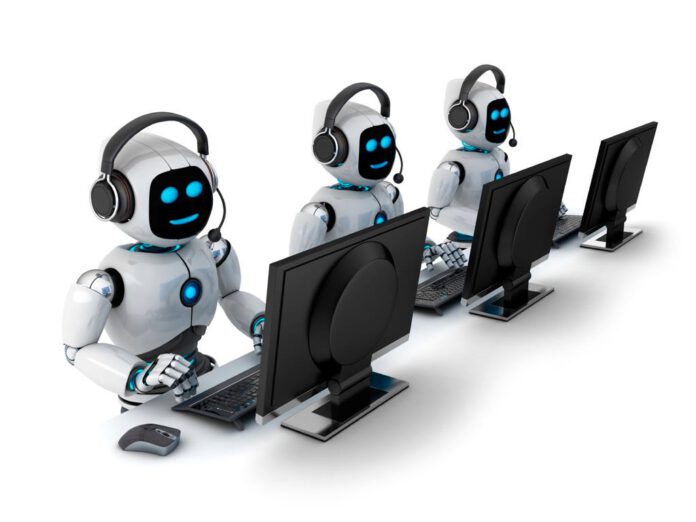
India, long hailed as the “World’s Office,” faces a historic turning point. The rise of artificial intelligence (AI) threatens the very foundation upon which its modern economic success was built. For decades, India’s ascent in global services—powered by its vast English-speaking workforce, technical talent, and competitive costs—transformed it into a hub for IT outsourcing, customer support, and business process management.
Giants like Tata Consultancy Services, Infosys, and Wipro became synonymous with dependable, low-cost tech solutions for the world’s biggest corporations. But the advantages India enjoyed in the software era will not automatically carry forward into the age of AI. The country must now confront an uncomfortable question: Will it ride the next wave of technological transformation, or be overwhelmed by it?
AI systems thrive on structured, repetitive tasks—precisely the kind of work that has defined India’s IT services industry for decades. From writing and debugging code to fielding customer enquiries, many core functions of India’s outsourcing economy are increasingly being automated by generative models, AI agents, and other emerging tools. Unlike earlier disruptions that largely complemented India’s service economy, AI presents a direct and potentially existential threat. What was once a competitive advantage—its large pool of relatively low-cost tech talent—now risks being replaced not by cheaper labour elsewhere, but by machines.
India’s predicament is made more complex by a structural imbalance in its economy. Unlike China, which built a vast manufacturing base alongside its rise in technology, India leaned heavily on services while its industrial sector remained underdeveloped. This dependence on service exports to drive growth and maintain foreign exchange reserves exposes India to disproportionate risks in the AI transition. Should global demand for routine service tasks collapse, the resulting unemployment would ripple across the economy—undermining consumption, straining social stability, and curbing domestic investment.
The country’s much-celebrated demographic dividend—its vast, youthful population—is also at risk of becoming a liability. In an era when machines increasingly outperform humans in basic knowledge work, population size alone is no longer a guarantor of economic strength. The traditional pathway from surplus labour to industrial prosperity is narrowing. If India cannot generate high-skill, innovation-driven employment at scale, its demographic advantage may quickly transform into a demographic burden.
Even more troubling is India’s persistent innovation deficit. Despite playing a central role in the global IT industry for decades, the country has produced few globally recognised original technologies or platforms. Its strengths lie in service execution, not in product creation. Research and development spending stands at just 0.65% of GDP—far behind China’s 2.6% and the United States’ 3.5%. India lacks a robust venture capital ecosystem, a risk-taking business culture, and the kind of deep, state-backed industrial policy that fuels long-term innovation. As a result, it remains largely a technology consumer rather than a creator.
Recognising the magnitude of the threat, the Indian government has begun to mobilise. The Modi administration has pledged $1.25 billion toward a National AI Mission, which includes plans to develop a domestic large language model (LLM) tailored to India’s multilingual society. Major conglomerates like Reliance and Tata have been tasked with providing computing power and GPU resources. While these moves signal intent, they cannot resolve deep-rooted structural issues overnight. India’s higher education system still struggles to cultivate top-tier research talent. Bureaucratic inertia stifles agility. The country’s startup ecosystem, while vibrant, remains undercapitalised and outpaced by peers in the US and China. Most critically, India’s heavy reliance on imported hardware—particularly advanced semiconductors—leaves it exposed to supply chain shocks and geopolitical risks that it cannot control.
Meanwhile, the global AI race is accelerating. The United States, home to Silicon Valley and the world’s most powerful AI firms, is leveraging its talent and capital to redefine productivity, national security, and industrial strategy. AI is being used not just to improve services, but to revive advanced manufacturing and reduce dependence on offshore labour. In China, a blend of aggressive industrial policy and market dynamism is pushing forward domestic AI development, from autonomous vehicles to smart cities. Beijing’s recent release of an open-source large model, Deep Quest, underscores its ambition to compete at the frontier.
India, by comparison, is caught in a dilemma. While its allies in the West view it as a strategic counterweight to China, those same nations may unintentionally undercut India’s economic base. If US firms begin to “reshore” services using AI, India’s outsourcing advantage will erode rapidly. Calls within the US for taxes on outsourced services, such as those supported by the Trump administration, would further pressure India’s export-led service model. In a geopolitical irony, the very technologies that are enabling the West to consolidate its advantage against China may inflict the deepest economic damage on India.
This moment carries implications beyond India’s borders. For the Global South, India has long served as a case study in how service-led growth can lift millions out of poverty. But if AI closes off that path prematurely, many emerging economies may be forced to abandon the Indian model altogether and rethink their development strategies from the ground up. The once-cherished concept of a “demographic dividend” may have to be redefined in a world where labour increasingly competes—and loses—to machines.
India’s future remains uncertain. In an optimistic scenario, the country could harness AI to improve public services, education, and governance—leveraging its population to drive inclusive growth through applied innovation, even without leading the charge in basic research. In a darker outcome, India may face simultaneous job losses in its core industries and an inability to build new ones fast enough. In this case, the nation could suffer widespread unemployment, economic stagnation, and rising inequality. An intermediate path is perhaps most likely: India continues to make gains in areas like fintech, medtech, and digital governance, while its outsourcing sector finds resilience in specialised niches. Yet this outcome would leave India as a supporting actor rather than a protagonist in the AI era.
At its heart, India must resolve a foundational contradiction: it is a service superpower without a manufacturing backbone. The rise of artificial intelligence will only magnify this imbalance. The world is entering a phase where economic power will be increasingly defined by the ability to build, adapt, and control advanced technologies. Without a stronger industrial base and a deeper innovation ecosystem, India will remain exposed to global shocks, dependent on external demand, and vulnerable to the very technologies it once helped deliver to the world.
Artificial intelligence is not just a technological transition—it is a restructuring of global economic order. For the United States, it promises renewed dominance; for China, an opportunity to leapfrog into high-value innovation; for others, a looming challenge. India, despite its past success, stands at a crossroads. Its legacy as the “world’s office” may prove irrelevant—or even obstructive—in this new era. To thrive, India must ask harder questions of itself: Can it become a creator rather than just a provider of technology? Can it convert its demographic advantage into an innovation advantage? Can it craft bold, forward-looking policy rather than leaning on past triumphs? The answers to these questions will determine not only India’s place in the AI century, but the broader balance of power in the 21st-century global economy.
AI will not wait for those who hesitate. India must act—or risk being left behind.
Source: Service Now, Amazon, Klark



